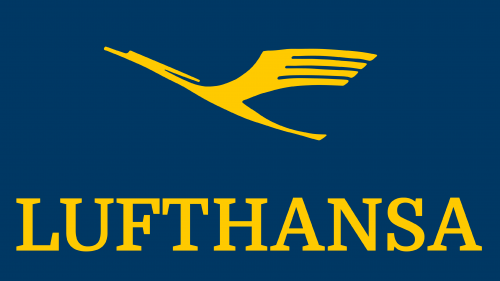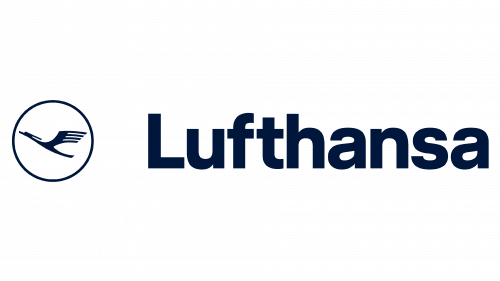Lufthansa Logo
Lufthansa is the largest German airline company, as well as one of the biggest in Europe. They operate worldwide, although with a slight preference for the European destinations. In Europe, it’s only outshined in fleet size and magnitude by RyanAir, the Irish flag carrier airline.
Meaning and History
The original Luft Hansa was founded in 1926. It continued operations until 1945, when it was shut down due to its being the German national airline during the Hitler’s reign. In 1953, the company was reestablished and soon named ‘Lufthansa’, which is a combination of words ‘air’ and ‘Hansa’ (the German trading league in the Middle Ages).
Who owns Lufthansa?
It’s owned by Lufthansa Group. It’s basically the same, except there are several smaller airlines inside the ‘Group’.
1953 – 1963
The first logo of the new Lufthansa featured a blue rectangle with the company’s traditional logo of a crane drawn in yellow in its middle. The same color was used with the company name they added along the figure’s bottom. They were all capital letters, and the font was a very thin serif script.
1963 – 2018
The 1963 rearranged the logo elements: the writing now occupied most of the space, and the small emblem was on its immediate left. The crane was now blue and encircled by the ring of the same color. The blue was also used for the brand name on the right, but the font changed to a bolder sans-serif type.
Where does Lufthansa fly?
Most of their destinations are in Europe and United States. However, they travel to all continents, except Antarctica.
2018 – today
In 2018, they decided to tweak the colors to a darker shade. While the previous one was closer to purple, this one is more like black than anything.
Emblem and Symbol
What is Lufthansa?
It’s one of the biggest airlines in Europe. They are originally German, but now provide services to the whole world.
Yellow is still a dominant color for Lufthansa. Many of their vessels use an encircled crane as livery, but with a blue crane on the yellow circle. Some prefer the combination of white and blue, but many planes painted in particular before 2018 prefer the yellow variation, and it’s become an iconic look for these vessels.











